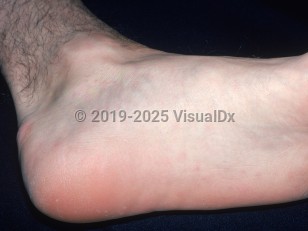Streptobacillus moniliformis rat-bite fever
Alerts and Notices
Important News & Links
Synopsis

Rat-bite fever is an acute illness usually seen in children or adults after a rat or rodent bite. It may occur with exposure to rats' saliva or excreta, or after the ingestion of contaminated food, water, or raw milk. Laboratory workers who work with rats are also at risk.
There are 2 types of rat-bite fever: streptobacillary (caused by Streptobacillus moniliformis, a gram-negative bacillus) and spirillary rat-bite fever (caused by Spirillum minus). Streptobacillary rat-bite fever, also known as Haverhill fever or epidemic arthritic erythema, is the type of rat-bite fever usually seen in the United States and also seen worldwide. After an incubation period of around a week, there is acute onset of fever, chills, headache, nausea, vomiting, severe migratory myalgias and arthralgias, and frequently arthritis (most commonly in the knees). In cases that occur after ingestion, vomiting and pharyngitis are more prominent. A rash accompanies the acute illness.
If untreated, potential complications of both forms of rat-bite fever may include meningitis, endocarditis, pericarditis, pneumonitis, anemia, amnionitis, prostatitis, pancreatitis, and abscesses in various organs.
There are 2 types of rat-bite fever: streptobacillary (caused by Streptobacillus moniliformis, a gram-negative bacillus) and spirillary rat-bite fever (caused by Spirillum minus). Streptobacillary rat-bite fever, also known as Haverhill fever or epidemic arthritic erythema, is the type of rat-bite fever usually seen in the United States and also seen worldwide. After an incubation period of around a week, there is acute onset of fever, chills, headache, nausea, vomiting, severe migratory myalgias and arthralgias, and frequently arthritis (most commonly in the knees). In cases that occur after ingestion, vomiting and pharyngitis are more prominent. A rash accompanies the acute illness.
If untreated, potential complications of both forms of rat-bite fever may include meningitis, endocarditis, pericarditis, pneumonitis, anemia, amnionitis, prostatitis, pancreatitis, and abscesses in various organs.
Codes
ICD10CM:
A25.1 – Streptobacillosis
SNOMEDCT:
52138004 – Streptobacillary fever
A25.1 – Streptobacillosis
SNOMEDCT:
52138004 – Streptobacillary fever
Look For
Subscription Required
Diagnostic Pearls
Subscription Required
Differential Diagnosis & Pitfalls

To perform a comparison, select diagnoses from the classic differential
Subscription Required
Best Tests
Subscription Required
Management Pearls
Subscription Required
Therapy
Subscription Required
References
Subscription Required
Last Reviewed:10/17/2018
Last Updated:10/17/2018
Last Updated:10/17/2018
Streptobacillus moniliformis rat-bite fever

